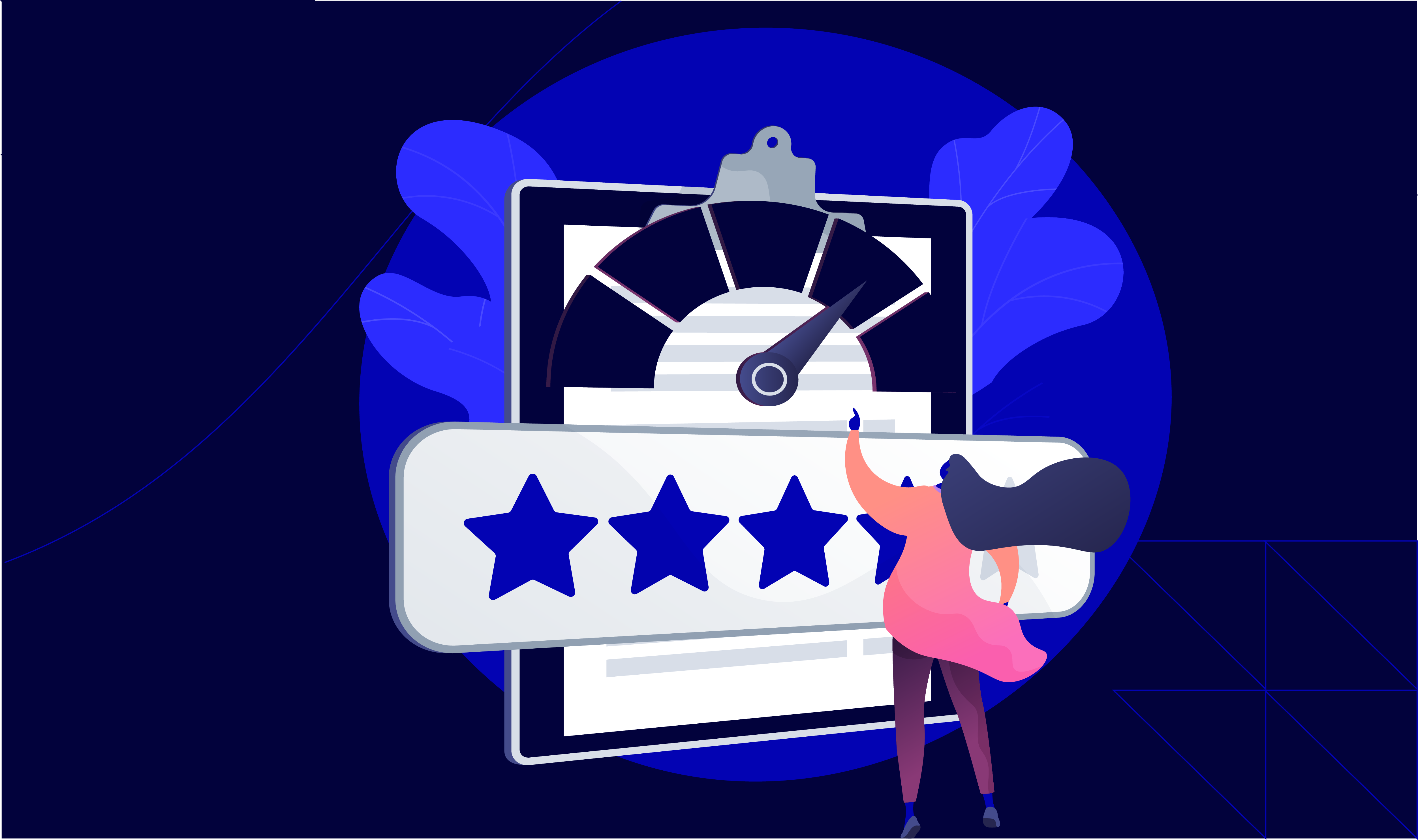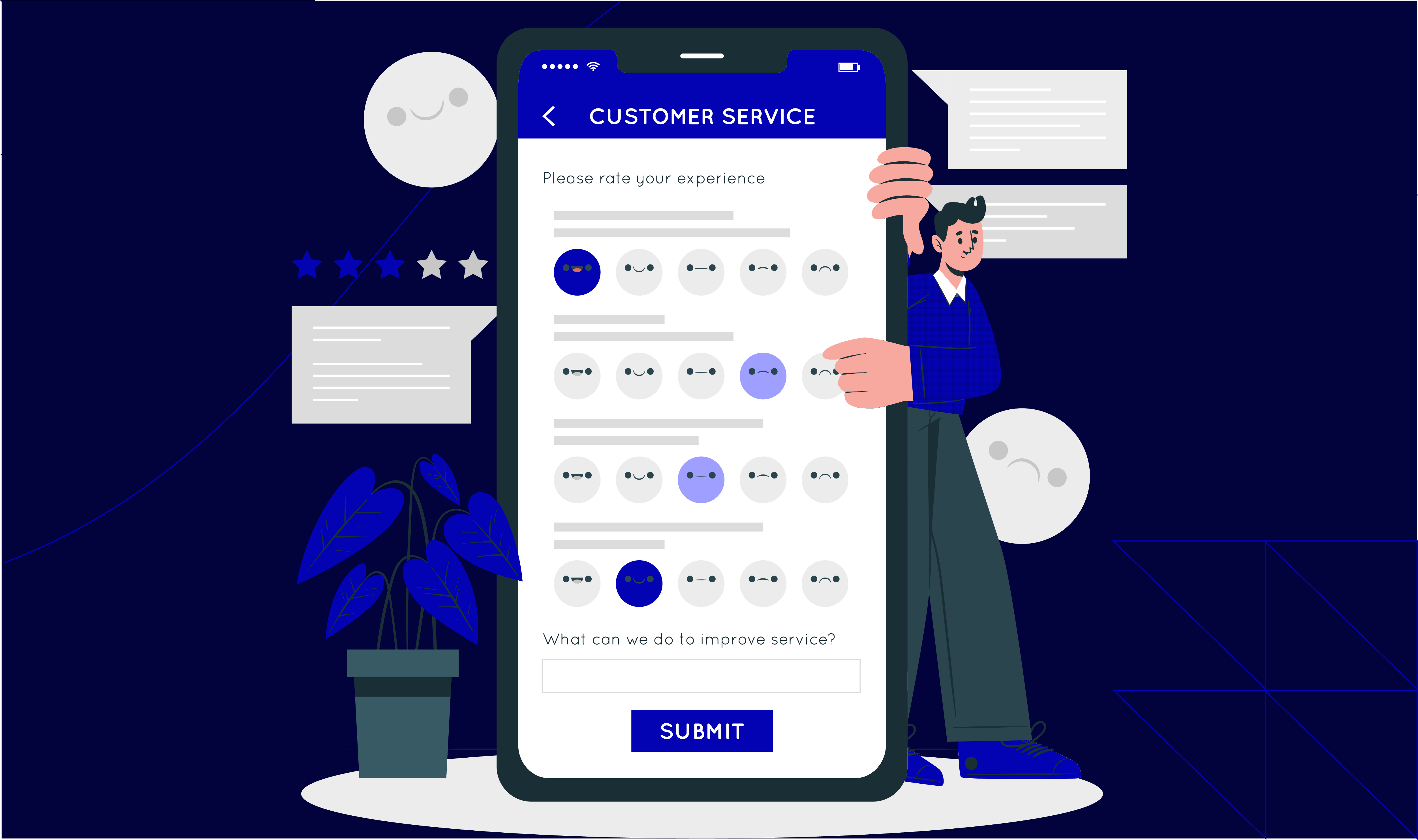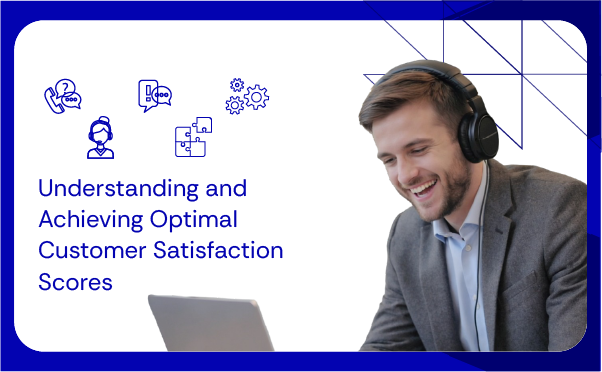Introduction to Customer Satisfaction Scores:
In a dynamic business environment, one factor that remains constant is customer satisfaction. A satisfied customer is more than an occasional buyer; they form the base for brand trust, loyalty and long-term profitability. Understanding and improving customer satisfaction is now crucial for the growth of brands and businesses. This improvement helps organizations and companies survive in today’s competitive market. Customer satisfaction is more than a metric. It’s a reflection of how well CX and Customer Experience leaders across D2C and consumer brands understand its customer’s preferences and needs to fulfill their expectations. Measuring customer satisfaction score is an initial step. It has become a key differentiator in driving retention and growth.
Customer satisfaction is more than a metric, it’s a reflection of how well your business meets and exceeds expectations. Measuring your Customer Satisfaction Score (CSAT) is the first step but what truly matters is how you use that data to make meaningful operational and strategic improvements.
At Atidiv, we’ve seen firsthand how a strong CSAT focus drives measurable outcomes, clients have achieved over 99% accuracy and 80% time savings by implementing data-led feedback and training initiatives. Explore how here.
This blog will help you explore how crucial CSAT is and how it helps increase customer satisfaction in every business to survive long-term in the competition.
Table of Contents:
- Introduction to Customer Satisfaction Scores
- What is the Customer Satisfaction Score?
- Why Customer Satisfaction Scores Matter
- 10 Ways to Improve Customer Satisfaction Scores
- Frequently Asked Questions
What are Customer Satisfaction Scores (CSAT)?

A Customer Satisfaction Score (CSAT) is a key performance indicator that measures how satisfied customers are with a specific product, service or experience. It’s one of the most straightforward ways for CX teams to quantify customer sentiment and identify service gaps.
Typically, CSAT is measured through surveys and feedback forms, asking customers to rate their experience on a scale of 1–5 or 1–10. These responses are then converted into a percentage representing overall satisfaction.
Common CSAT measurement types include:
- Transaction CSAT: Captures satisfaction after specific interactions (e.g., support calls, returns, or deliveries).
- Relationship CSAT: Measures overall satisfaction over a defined period, often quarterly.
- Product CSAT: Evaluates customer satisfaction with a specific product or feature.
- Support CSAT: Assesses satisfaction with service quality provided by support teams.
Atidiv’s clients in retail and e-commerce regularly achieve CSAT scores above 4.8 by combining proactive customer engagement and omnichannel support systems.
Why Customer Satisfaction Scores Matter and How to Calculate Them:

In simple terms, your CSAT score reflects the emotional and practical impact your brand has on its customers with your product or service offered. When customer satisfaction increases, it generally leads to greater loyalty and trust. This eventually leads to stronger loyalty, reduced churn and improved profitability. Engaging with customer feedback and increasing customer satisfaction scores helps businesses enhance loyalty and reduce the cost of acquiring new customers.
Financial Impact
- 5% increase in retention = 25-95% profit increase
- Satisfied customers spend 67% more than neutral ones
- Customer acquisition costs 5-25x more than retention
Competitive Advantage
- 84% of companies that improve their CSAT report increased revenue.
- High CSAT correlates with 93% greater wallet share
- Positive word-of-mouth reaches 2-3x more potential customers
The Customer Satisfaction score (CSAT) can be calculated using a few methods like:
- You can calculate CSAT using star ratings with the formula:
CSAT Score (%) = (No. of Stars Given ÷ Sum of the Maximum Possible Stars) × 100.
“On a scale of 1–10, how satisfied were you with our service today?”
- Taking smiley scores like happy, neutral, and unhappy, where the formula is CSAT Score (%) = (No. of Happy Buttons Selected ÷ Total No. of Buttons Selected) × 100.
- Taking ratings on a scale of 1 to 10, where the formula is CSAT SCORE (%) = (Sum of All Scores ÷ Sum of the Maximum Possible Scores) x 100.
10 Ways to Improve Customer Satisfaction Scores:

Here are some best practices that help gain customer satisfaction and improve customer satisfaction scores CSAT, that ensure meaningful results and actionable insights:
Implement Visual Support Technology:
In today’s modern technology, customers expect experiences that are interactive, frictionless experiences. Customers now expect the service that goes beyond text-based interactions and resolve issues faster and more transparently. Video support tools like Snapcall can achieve efficiency through immediate visual assistance by enabling:
- Real-time visual problem diagnosis
- Screen sharing for guided resolution
- AI-powered interaction analysis
- Instant video messaging capabilities.
Atidiv integrates such tools in client workflows to deliver 95%+ resolution accuracy, as seen in this case study.
Enhance First Response Time:
Quick responses always create a greater impact on customers. When customer issues are addressed instantly, customers feel prioritized and valued which helps gain trust and loyalty from customers. Research says 60% of customers expect issue resolution within 10 minutes.
- Set up automated acknowledgements
- Use AI chatbots for instant responses
- Set up automated email replies
- Implement Visual IVR systems
Atidiv’s automation-led support solutions reduce average handling time by up to 50%, improving both CSAT and operational efficiency.
Personalize Customer Satisfaction:
Organizations that have the highest CSAT score use personalization as a tool to improve scores. This requires understanding each customer’s unique journey and create contextual and relevant interactions.
- Segregate customers depending on their behaviours
- Customize communication channels
- Tailor and cater needs and solutions based on specific needs
- Use predictive analytics for proactive support.
Leverage AI-powered Analytics:
Prioritize the customer’s feedback by transforming it into actionable insights. Generate automated improvement recommendations. Take an analysis and try predicting the potential issues before they escalate. Bring an effective action plan from AI analysis of customer interactions for measuring customer satisfaction. This predictive layer ensures that CX leaders can act before dissatisfaction impacts brand perception.
Implement Omni-Channel Support:
Implement multi-channel support to meet customers where they can interact and maintain consistent service quality, sync and keep customer history accessible across all platforms, enable seamless, personalized support.
Enhance Agent Training and Empowerment:
As we know, well-trained agents help enhance empowerment. They help deliver a better experience for customers by providing regular video training sessions, creating clear escalation protocols, using interaction recordings for coaching and giving decision-making authority to agents. Provide ongoing coaching through video-based sessions, feedback reviews and decision-making autonomy.
Atidiv’s CX training programs emphasize data-backed learning, helping agents consistently deliver 98%+ QA scores across interactions.
Build a Knowledge Base:
Help your clients and customers build a knowledge base. Enable customer self-service by providing guides, creating video tutorials, documenting some common issues and their resolutions for customers, upgrading content regularly based on customer feedback, keeping the piece of information handy and easily accessible to avoid confusion for the customer.
Learn how Atidiv uses knowledge automation to save 80% of agent time in this success story.
Optimize Response Quality:
Ensure your responses are optimized for effectiveness by focusing on first contact resolution. This can be achieved by
- Using Video messages for quality explanations
- Provide step-by-step visual guides
- Follow up on the issue until it gets resolved
- Collect feedback on response quality
- Focus on First Contact Resolution (FCR)
Create Feedback Loops:
Turn customer insights into improvements:
- Implement customer satisfaction surveys to collect feedback
- Respond and act quickly on trending issues
- Share insights across departments and platforms
- Analyze video interaction patterns
Atidiv’s closed loop CX model allows clients to act on real-time feedback, improving response alignment and customer sentiment tracking.
Develop Proactive Support Strategies:
Take continuous surveys and analysis to prevent issues before they arise. This can be done by sending preventive maintenance alerts, creating onboarding video guides, monitoring usage patterns for red flags, and reaching out to customers before they need help to focus on increasing customer satisfaction.
Proactive service not only boosts CSAT but also enhances overall brand perception.
What Is a Good Customer Satisfaction Score?
A CSAT of 80% or higher is generally considered excellent, while 70–80% is solid. However, benchmarks vary across industries like retail and e-commerce brands often target 85–90%, reflecting stronger emotional engagement.
Atidiv’s D2C clients maintain an average CSAT of 4.8/5, achieved through integrated analytics, automation and dedicated CX teams.
Conclusion
For CX and Support leaders, CSAT is a mirror reflecting the quality of your brand experience. Improving CSAT is about aligning people, process and technology to consistently deliver satisfaction at every touchpoint.
At Atidiv, we help global consumer brands elevate CSAT through scalable, data-backed customer experience models. Our approach combines AI automation, omnichannel excellence and 24/7 managed support, driving measurable impact across client satisfaction, retention and ROI.
FAQs on Customer Satisfaction Scores
1. What is a good customer satisfaction score (CSAT)?
A good CSAT score is considered to be 80% or a score generally higher than that is said to be excellent, while 70% – 80% is good. However, ideal scores may vary depending on the business and industry factors and should be benchmarked against the competitors.
2. How to improve customer satisfaction scores (CSAT)?
Take continuous surveys and feedback from the employees, invest in employee training, have a streamlined process and consistently close the feedback loop with the customers. This helps in focusing and addressing the common pain points that help in improving the CSAT score.
3. How can I encourage more customers to respond to CSAT surveys?
One can encourage more customers to respond to CSAT surveys by keeping it short and crisp, mobile-friendly, and clearly communicating the value of feedback and considering offering incentives for completion. Timing is crucial—reach out when the experience is still fresh in the customer’s mind.
4. How quickly should we respond to customer issues?
Quick responses always create a greater impact on customers. When the customer issues are addressed instantly, customers feel prioritized and valued which gains trust and loyalty from customers. Research says 60% of customers expect resolution in 10 minutes. Video support tools like Snapcall can achieve efficiency through immediate visual assistance.
5. How to calculate customer satisfaction score?
The Customer Satisfaction score (CSAT) can be calculated using a few methods like:
- Taking star ratings, where the formula is CSAT Score (%) = (No. of Stars Given ÷ Sum of the Maximum Possible Stars) × 100.
“On a scale of 1–10, how satisfied were you with our service today?”
- Taking smiley scores like happy, neutral and unhappy, where the formula is CSAT Score (%) = (No. of Happy Buttons Selected ÷ Total No. of Buttons Selected) × 100.
- Taking ratings on a scale of 1 to 10, where the formula is CSAT SCORE (%) = (Sum of All Scores ÷ Sum of the Maximum Possible Scores) x 100.

